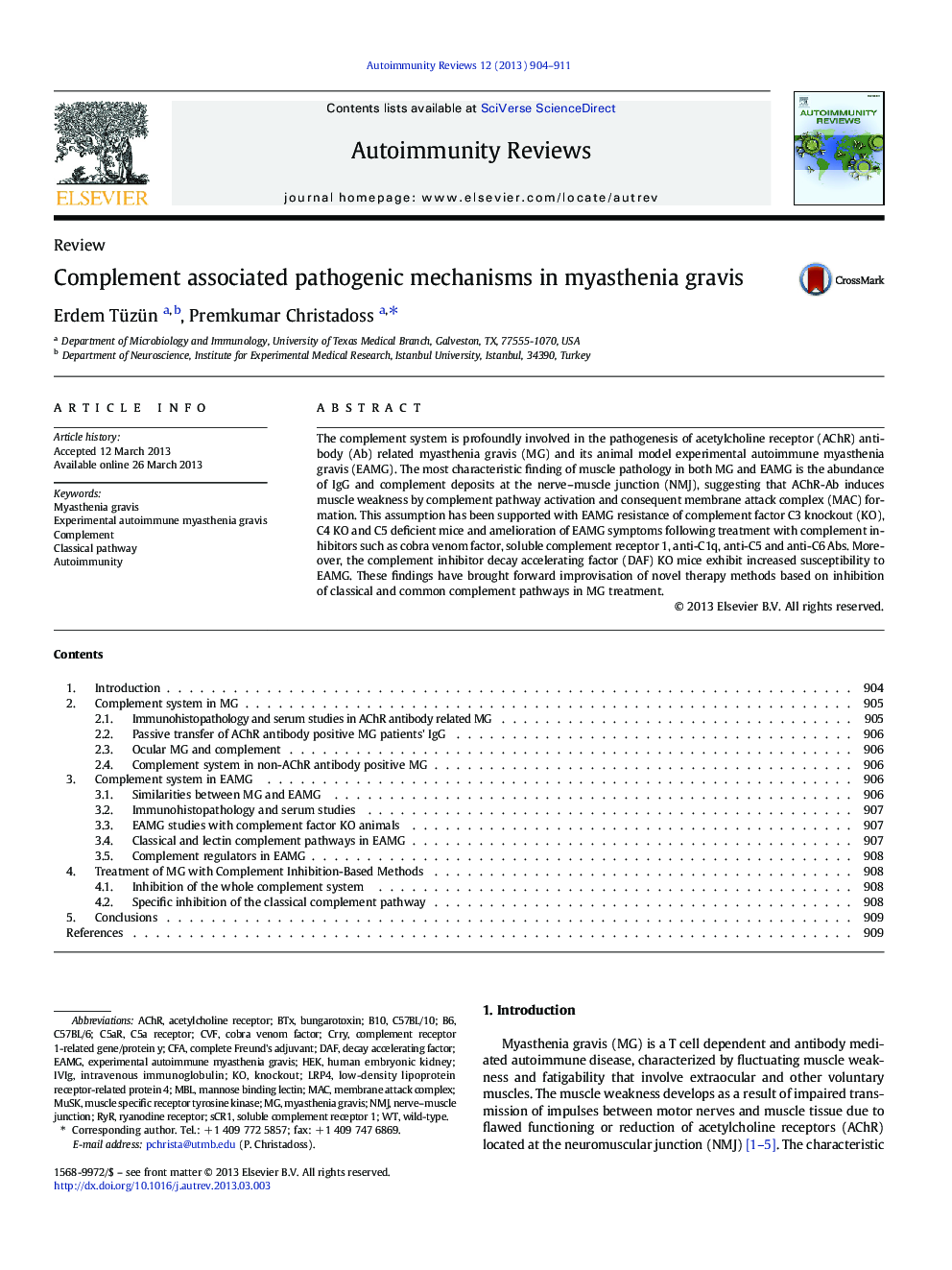| Article ID | Journal | Published Year | Pages | File Type |
|---|---|---|---|---|
| 3341472 | Autoimmunity Reviews | 2013 | 8 Pages |
•The complement system is profoundly involved in AChR related myasthenia gravis (MG).•DAF confers protection against complement mediated neuromuscular junction lysis.•Classical pathway appears to be the chief complement pathway in MG pathogenesis.•MG treatment via classical pathway inhibition seems safe and feasible.
The complement system is profoundly involved in the pathogenesis of acetylcholine receptor (AChR) antibody (Ab) related myasthenia gravis (MG) and its animal model experimental autoimmune myasthenia gravis (EAMG). The most characteristic finding of muscle pathology in both MG and EAMG is the abundance of IgG and complement deposits at the nerve–muscle junction (NMJ), suggesting that AChR-Ab induces muscle weakness by complement pathway activation and consequent membrane attack complex (MAC) formation. This assumption has been supported with EAMG resistance of complement factor C3 knockout (KO), C4 KO and C5 deficient mice and amelioration of EAMG symptoms following treatment with complement inhibitors such as cobra venom factor, soluble complement receptor 1, anti-C1q, anti-C5 and anti-C6 Abs. Moreover, the complement inhibitor decay accelerating factor (DAF) KO mice exhibit increased susceptibility to EAMG. These findings have brought forward improvisation of novel therapy methods based on inhibition of classical and common complement pathways in MG treatment.
